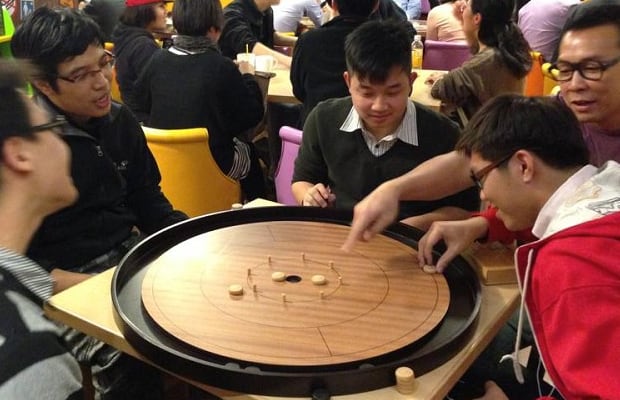
Introduction by Peter Vaughan: I often find that the games of Ta-Te Wu are very unique, and offer a perspective I don’t see in other designs. Case in point – his Chinese zombie party game, “Hoppers” – there’s one round of physical play followed by a deduction round, and I can’t explain why any of that should work, but it does wonderfully. Ta-Te shares with our blog a glimpse into a secret formula of designing games – playing a variety of games!
—
BOARD GAME WORLD VIEW 桌遊世界觀
When I lived in Shanghai few years back, I often expressed the importance of one having a board game world view to local designers and others who are in the industry. Simply saying the board game world out there is not just playing a few games until you can say: ‘Oh, I know it all.’ The world is no longer a two-player abstract Chess game that you play at home with your family members. It’s also not a dice rolling game that you love when you were little kid. This world is massive. It is beyond your country and it’s cross-culture. If you are serious about designing, developing or publishing a board game, you must elevate your vision to the current state of board game world view.

photo from Jolly Thinkers Cafe, Hong Kong
For a new designer or someone who has an interest in designing a board game, unless if you have decided to knock off someone’s design, the best way to start is by playing board games. 20 games is a minimum to start (but I really want to say 50). Why so much? As a gamer, I enjoy playing board games and as a designer the process inspires my creativity. Furthermore, It is important to constantly learn and experience the board gaming world beyond yourself, knowing what’s already available in the market and who and what are your competition. And yes, since we are talking about world view, playing games from other side of your world is very important.
In the few years I lived in China, I often playtested my games in the three major cities: Beijing, Shanghai and Guangzhou. Through time, I learned people in each region have different preferences in board gaming, such as theme, mechanic, number of player, game time, etc. even within the same ethnicity. This experience encouraged me to expanded my playtest audience worldwide. I want to know more about my games before they are published. Half year before Di Renjie was ready to launch on Kickstarter, it was sent to 20+ counties for playtesting and definitely made the game itself a better game. Once again like everyone says, It is so important to get feedback beyond one’s limited circle of friends and family.
I believe designers create games based on his/her knowledge and cultural expectation and experience thus in theory board game is a product of designer’s cultural evolution. In the past, there are two major categories of games: US and German. Now the industry has evolved and cultures have crossed. Gamers no longer just want to play a US or German game but a variety. Mechanics that were least favoroable in the past are now more popular than ever. As a designer, your scope has to expand and go beyond. The market has gone diversified and so must you. Design not for you and people around you but for gamers across the globe.
If you are not sure where to go from here, play more games preferably from different countries and learn to appreciate game mechanics that you haven’t tried or often object. Perhaps after another 20 games you will be ready for the world view and begin your first design.








